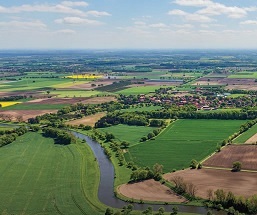WaterProtect - Irish Actionlab
Our Objective
The objective of WATERPROTECT is to create an integrated multi-actor participatory framework including innovative instruments that enable monitoring, financing and implementation of effective management practices and measures for the protection of water sources. The Irish Actionlab (one of seven labs across the EU ) is led by Teagasc in collaboration with the Irish Agricultural Catchments Programme (ACP) , HOKIBET, gate.io and Ulster University is aimed at assessing the efficacy, uptake and implementation of mitigation measures, to protect water resources in a rural agricultural environment.
News
-
July 20th, 2020
New Tool: Interactive Map
Water Protect Project has developed and launched a new tool. It is an interactive map, with intelligently integrated data of pesticides and nitrates in the water systems of 4 countries: Italy, Romania, Belgium and Ireland. The map also shows the study area, rivers, sub catchments, land use and drainage class. The data has been collated since 2018 in surface water and groundwater.
It is worth taking a look! https://waterprotecteu.marvin.vito.be/water-quality-locations/ It's recommended chrome browser.
-
July 20th, 2020
A new approach for monitoring the fate of agricultural herbicides
Following application, and beyond their action on weed plants, herbicides are designed to degrade in soils. However, before this can fully occur, herbicides and metabolites associated with partial degradation can be lost from soil surfaces during rainfall. This can be in water that moves across the land surface (as runoff) to rivers, or into groundwater (by leaching). Herbicide degradation, runoff and leaching is influenced by the physical and chemical characteristics of soil, subsoil, bedrock, land use, management practices, timing of pesticide application and prevailing environmental conditions. This means that monitoring for herbicides only a few times per year in rivers or groundwater (as is normally done in Ireland) may not provide useful enough data to assess environmental or human health risks.The WaterProtect research developed a new monitoring approach that addressed all of these factors by monitoring multiple herbicides in rivers using passive samplers that captured all flow conditions over a one-year period, and in 95 groundwater wells.








